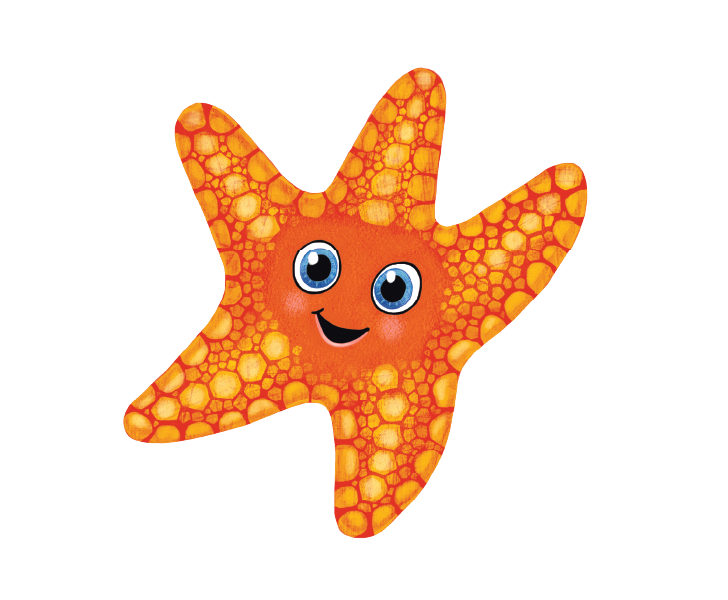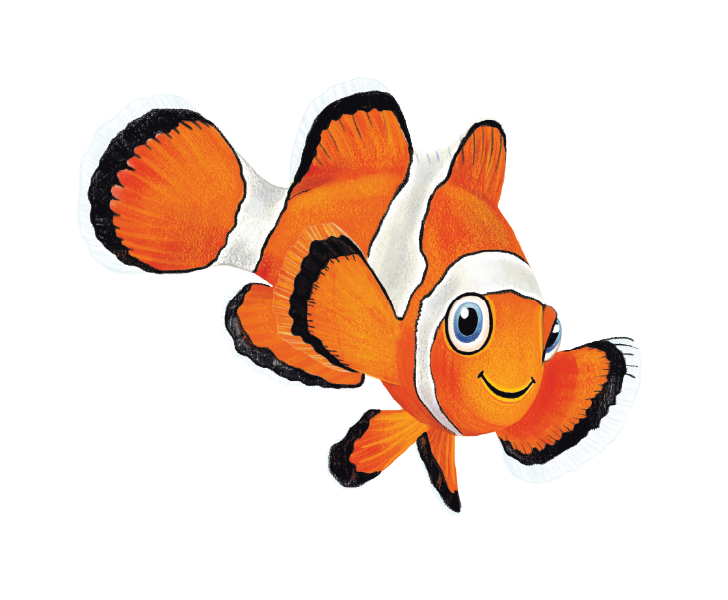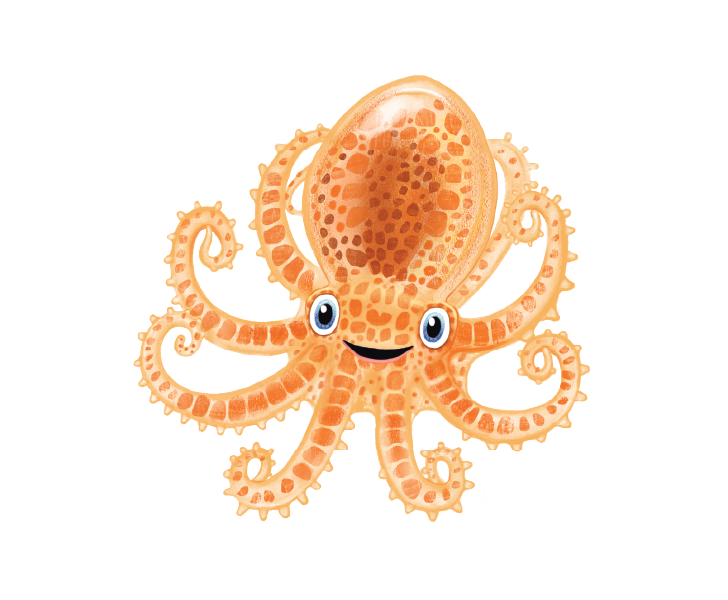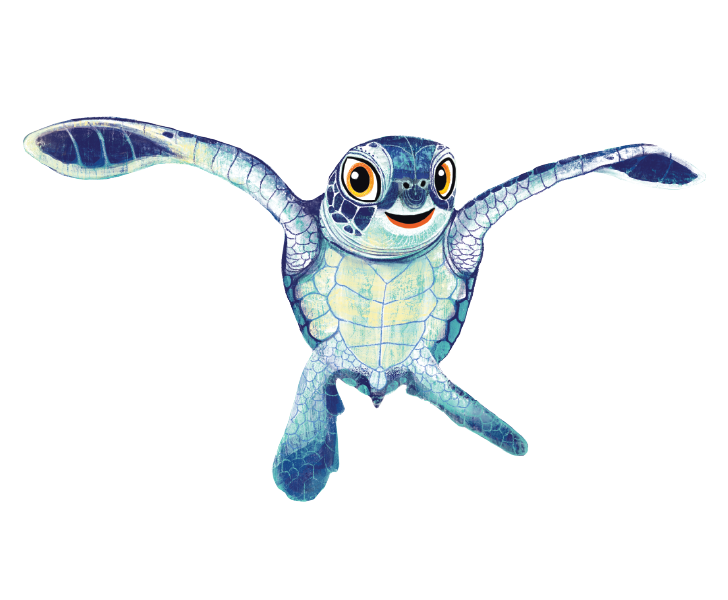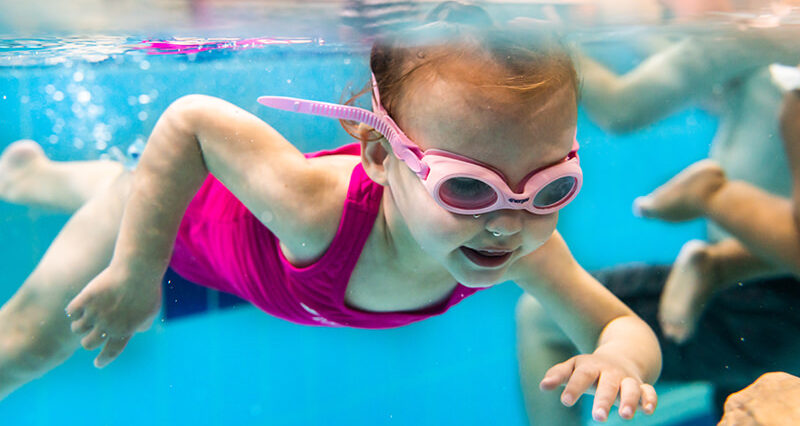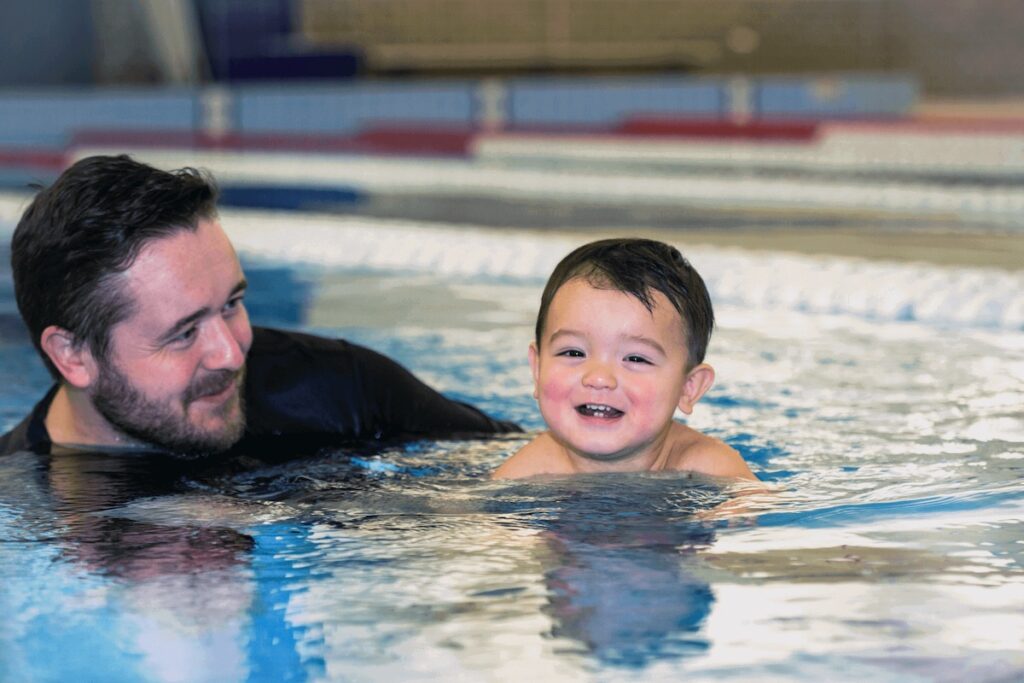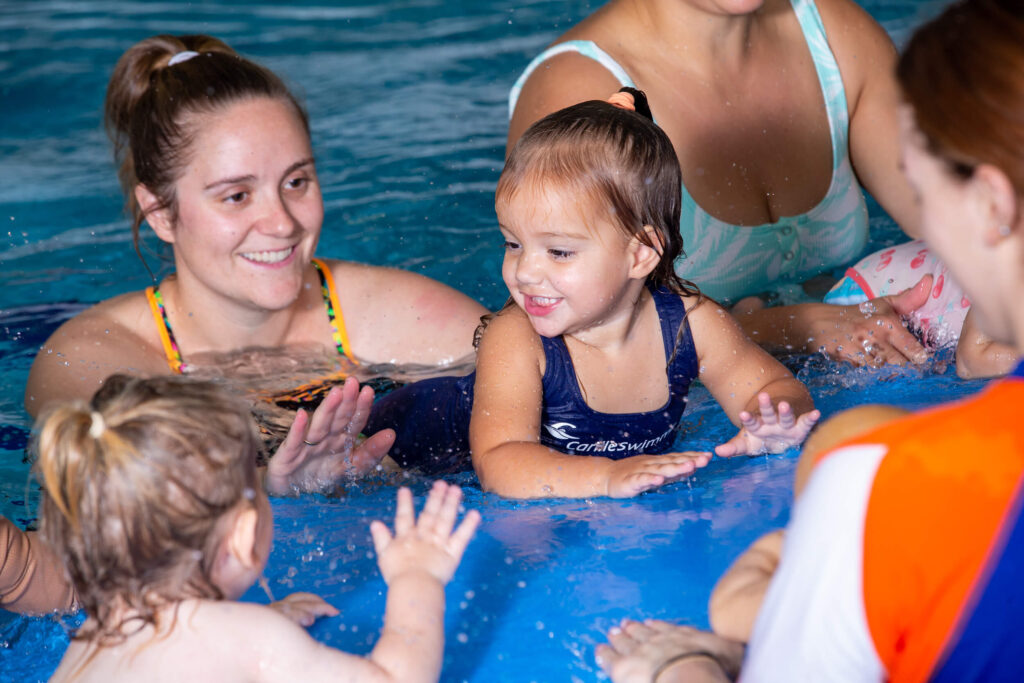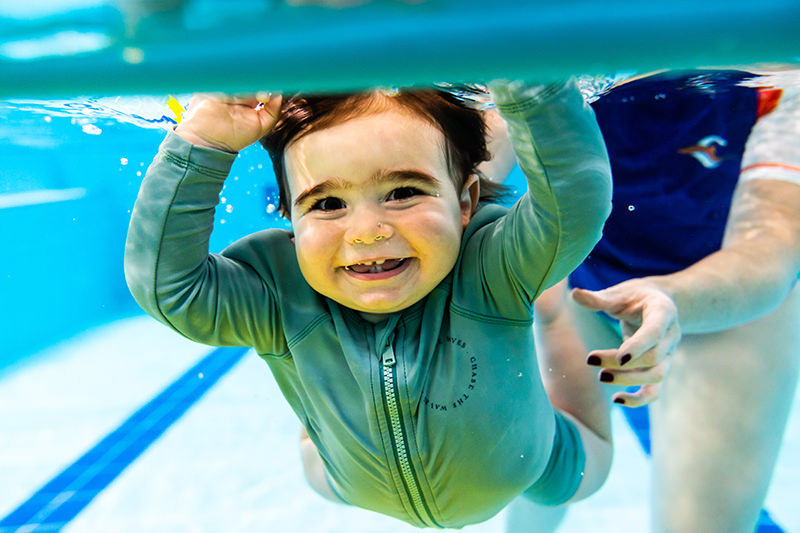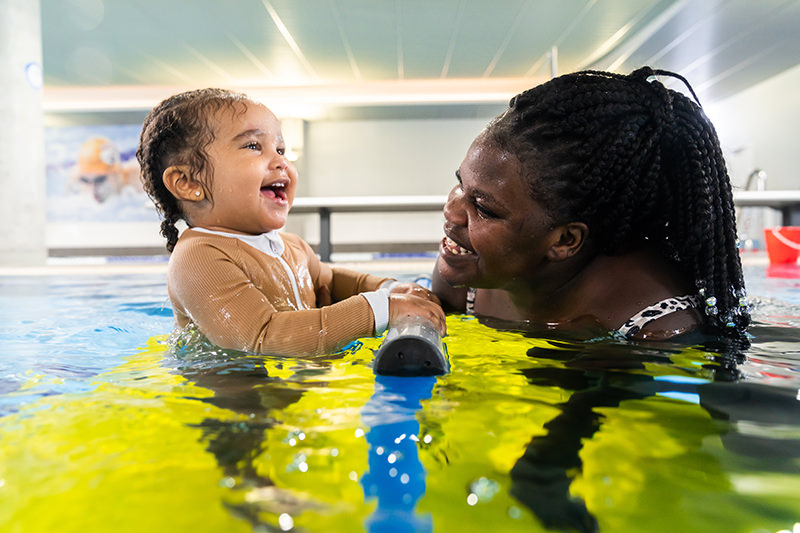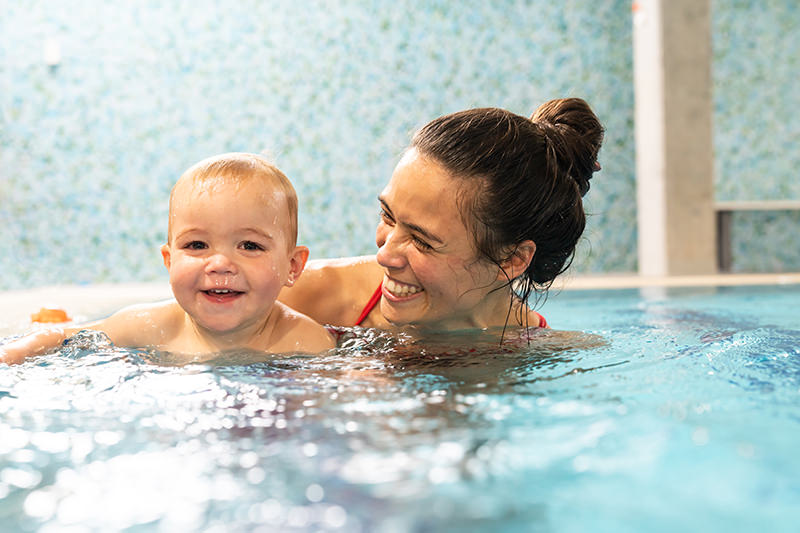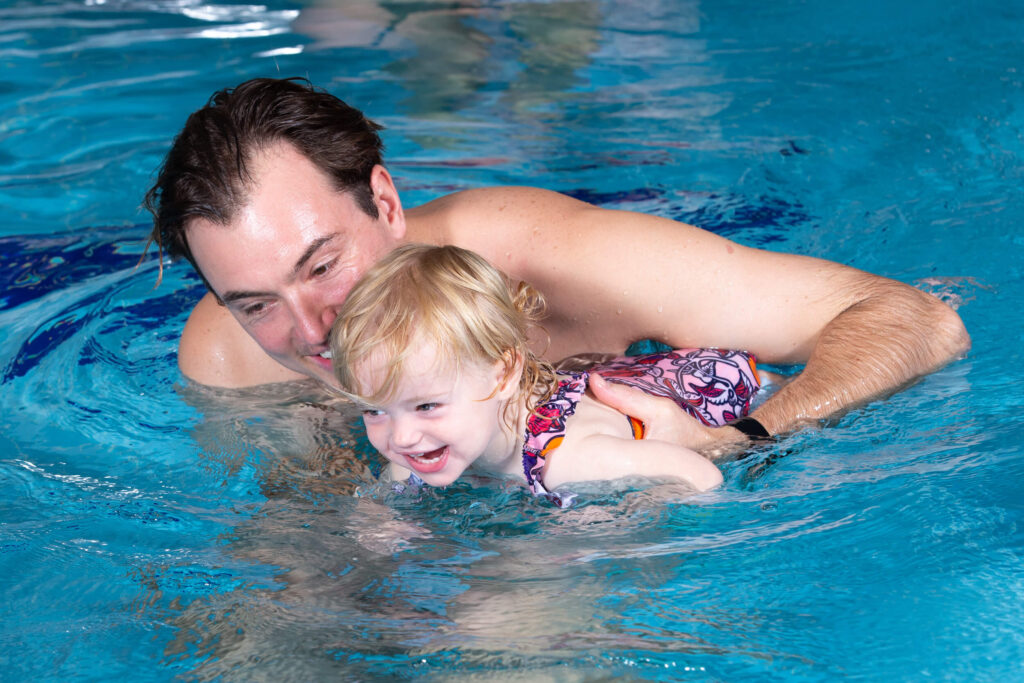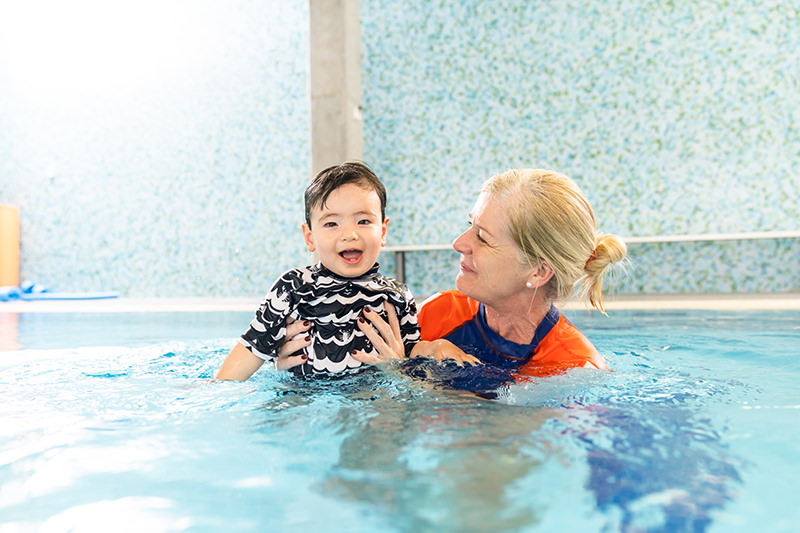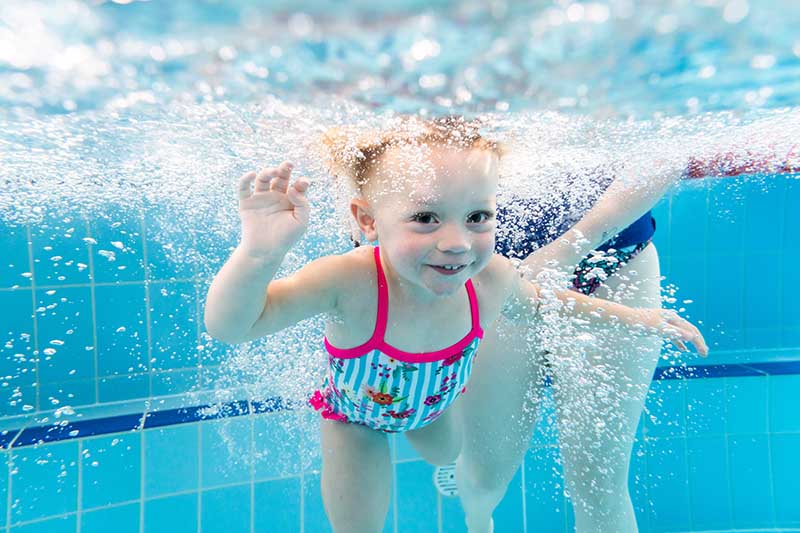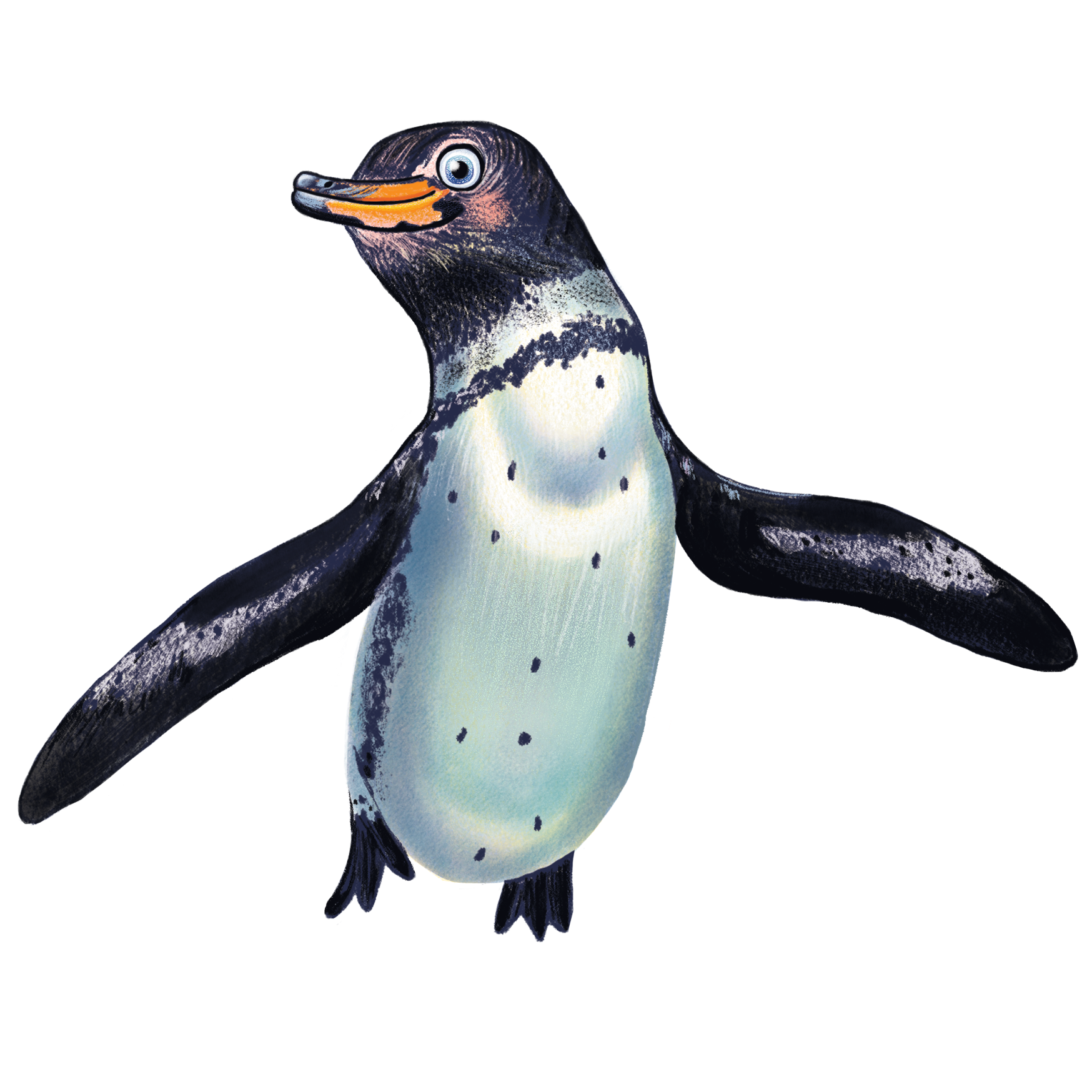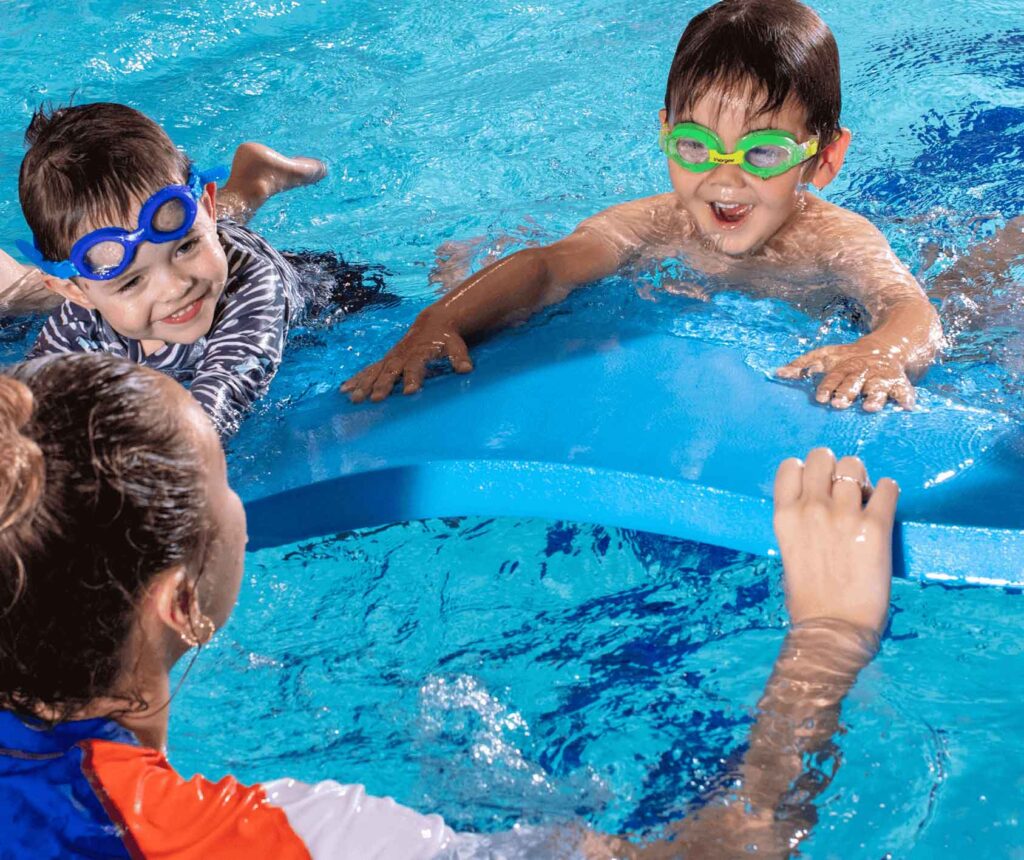Released to short glide
Once your child is happily submerging, you may want to let them try swimming on their own. It is quite possible for a six-month-old child to be released comfortably during a submersion and allowed to glide for a few seconds.
Propelling
Once children are released and gliding, they will often begin kicking their feet or paddling with their arms. It isn’t necessary that they do this right away, or every time. Gliding with their body is a great way to feel the support that water gives them.
Children will often begin to propel when they feel a need to, so gradually increasing distance or sending them off with less of a push may encourage this.
It is common to see eight-month-old children, who have been attending regularly, actively propel themselves for a couple of meters. However, remember that babies who are not yet walking will still need assistance to finish off their swims at your shoulder, the wall or platform.
Turn around swim
The level of swimming required to enter the water, turn and come back to the wall, is quite an accomplishment. It will take most children until at least 2 years, if not longer, even if they have been swimming from an early age.
Repetition
Children learn skills by repetition. Even though a child performs a skill one day, this doesn’t mean they will remember it the next, so review of skills previously learned is necessary before moving on to something new. The class formats that you will learn and see repeated are designed to help create comfortable familiarity. For example, though they may try “Humpty Dumpties” every class, they may be carried to the wall on the first day and eventually progress to swimming independently with a breath. So, the same activity, repeated often, can still offer new challenges.
